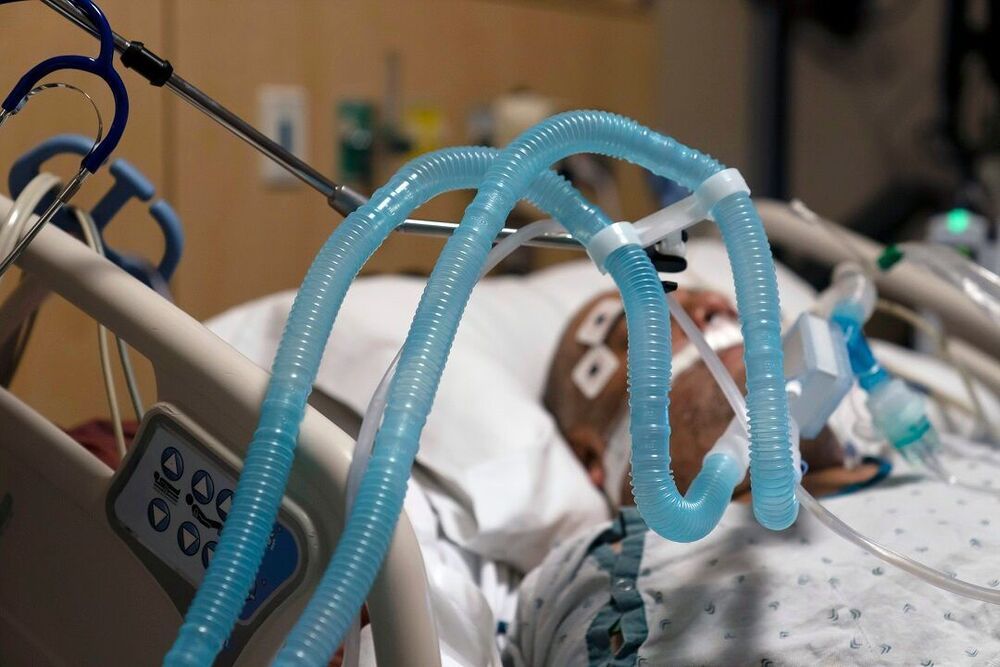All drones weighing over a quarter kilogram will need Remote ID transmitters.



Containing various structures with a range of masses, from massive and dense clusters of galaxies to low-density bridges, filaments and sheets of matter, superclusters are among the largest structures in the known universe. Finding and investigating superclusters in detail could be essential in order to improve our understanding of the formation and evolution of large cosmic filaments.
Now, a group of astronomers led by Vittorio Ghirardini of the Max Planck Institute for Extraterrestrial Physics in Garching, Germany, reports the discovery of a new supercluster. The structure was identified by the eFEDS survey during its Performance Verification (PV) phase.

Summary: Extraverts tend to use more “positive emotional” and “social process” words when communicating, researchers report.
Source: NTU Singapore.
A study by a team of Nanyang Technological University, Singapore (NTU Singapore) psychologists has found a link between extraverts and their word choices.

Colorado public health officials on Tuesday confirmed the first U.S. case of the new highly contagious strain of the coronavirus that was first discovered in Britain weeks ago, prompting a new set of lockdowns there.
A state lab informed the Centers for Disease Control and Prevention (CDC) about the presence of the strain in a man in his 20s from Elbert County. He has no travel history and is isolating himself until cleared by public health officials, Gov. Jared Polis said in a statement.
STEFANIK CALLS CUOMO ‘ABSOLUTE DISGRACE’ FOR PRIORITIZING DRUG ADDICTS FOR CORONAVIRUS VACCINE

An experimental drug reversed age-related declines in memory and mental flexibility in old mice after just a few doses, according to a study by researchers from the University of California, San Francisco (UCSF).
The drug, ISRIB, has previously been shown in other studies to restore normal cognitive function in mice after traumatic brain injury, enhance memory in healthy mice and mice with Down syndrome, as well as prevent noise-related hearing loss.
A team of European researchers discovered a new high-pressure mineral in the lunar meteorite Oued Awlitis 001, named donwilhelmsite [CaAl4Si2O11]. The team around Jörg Fritz from the Zentrum für Rieskrater und Impaktforschung Nördlingen, Germany and colleagues at the German Research Centre for Geoscience GFZ in Potsdam, Museum für Naturkunde Berlin, Natural History Museum Vienna, Institute of Physics of the Czech Academy of Science, Natural History Museum Oslo, University of Manchester, and Deutsches Zentrum für Luft und Raumfahrt Berlin published their findings in the scientific journal American Mineralogist.
Besides the about 382 kilograms of rocks and soils collected by the Apollo and Luna missions, lunar meteorites allow valuable insights into the formation of the Moon. They are ejected by impacts onto the lunar surface and subsequently delivered to Earth.
Some of these meteorites experienced particularly high temperatures and pressures. The extreme physical conditions often led to shock melting of microscopic areas within these meteorites. These shocked areas are of great relevance as they mirror pressure and temperature regimes similar to those prevailing in the Earth’s mantle. Therefore, the microscopic shock melt areas are natural crucibles hosting minerals that are otherwise naturally inaccessible at the Earth’s surface. Minerals like wadsleyite, ringwoodite, and bridgmanite, constitute large parts of the Earth’s mantle. Theses crystals were synthesized in high-pressure laboratory experiments. As natural minerals they were first described and named based on their occurrences in meteorites.
With the rapid advancement of humanoid robots in the market today, we’re able to see how our lives have become simpler and easier. In this video let’s look at some of the most advanced humanoid robots that are being developed by various companies and organisations.
✅Subscribe to our Channel to learn more about the top Technologies: https://bit.ly/2VT4WtH
⏩ Check out the Artificial Intelligence training videos: https://bit.ly/2Li4Rur.
#HumanoidRobots #AdvancedHumanoidRobot #Robotics #ArtificialIntelligence #FutureOfArtificialIntelligence #Simplilearn.
Simplilearn’s Artificial Intelligence course provides training in the skills required for a career in AI. You will master TensorFlow, Machine Learning and other AI concepts, plus the programming languages needed to design intelligent agents, deep learning algorithms & advanced artificial neural networks that use predictive analytics to solve real-time decision-making problems without explicit programming.
Why learn Artificial Intelligence?
Is the author of the book Free To Choose Medicine: Better Drugs Sooner at Lower Cost; a book that offers a compelling argument for the freedom of every patient, guided by the advice of his or her doctor, to make informed decisions about the use of not-yet-FDA-approved therapeutic drugs, that are in late stages of clinical testing.
Mr. Madden is recently retired as a Managing Director of Credit Suisse/Holt after a career in money management and investment research that included the founding of Callard Madden & Associates. During his career, he developed the cash-flow return on investment (CFROI) valuation framework that is widely used today by money management firms worldwide.
Mr. Madden is currently an independent researcher and a Senior Fellow at the National Center for Policy Analysis (NCPA). His research has focused on the themes of knowledge building and wealth creation being able to exist simultaneously in businesses, and these themes are represented in his various books including — Value Creation Principles: The Pragmatic Theory of the Firm Begins with Purpose and Ends with Sustainable Capitalism, Wealth Creation: A Systems Mindset for Building and Investing in Businesses for the Long Term, and Reconstructing Your Worldview: The Four Core Beliefs You Need to Solve Complex Business Problems.
Mr. Madden is a proponent of the application of systems thinking to public policy, and his work in public policy has resulted in the Free To Choose Medicine (http://freetochoosemedicine.com/) plan, which was originally developed in journal articles published in Regulation, Cancer Biotherapy & Radiopharmaceuticals, and Medical Hypotheses.
Mr. Madden is passionate about the passage of a Free To Choose Medicine Act which would be a defining moment for Americans giving control of medical decisions back to individual patients and their doctors.

Summary: Astrocytes, not microglia, are responsible for constantly eliminate unnecessary and excessive adult synaptic connections in response to brain activity.
Source: KAIST
Developing brains constantly sprout new neuronal connections called synapses as they learn and remember. Important connections — the ones that are repeatedly introduced, such as how to avoid danger — are nurtured and reinforced, while connections deemed unnecessary are pruned away. Adult brains undergo similar pruning, but it was unclear how or why synapses in the adult brain get eliminated.
As astronauts get ready to go back to the moon and spend more time in space, they’ll need better gear to help them survive.